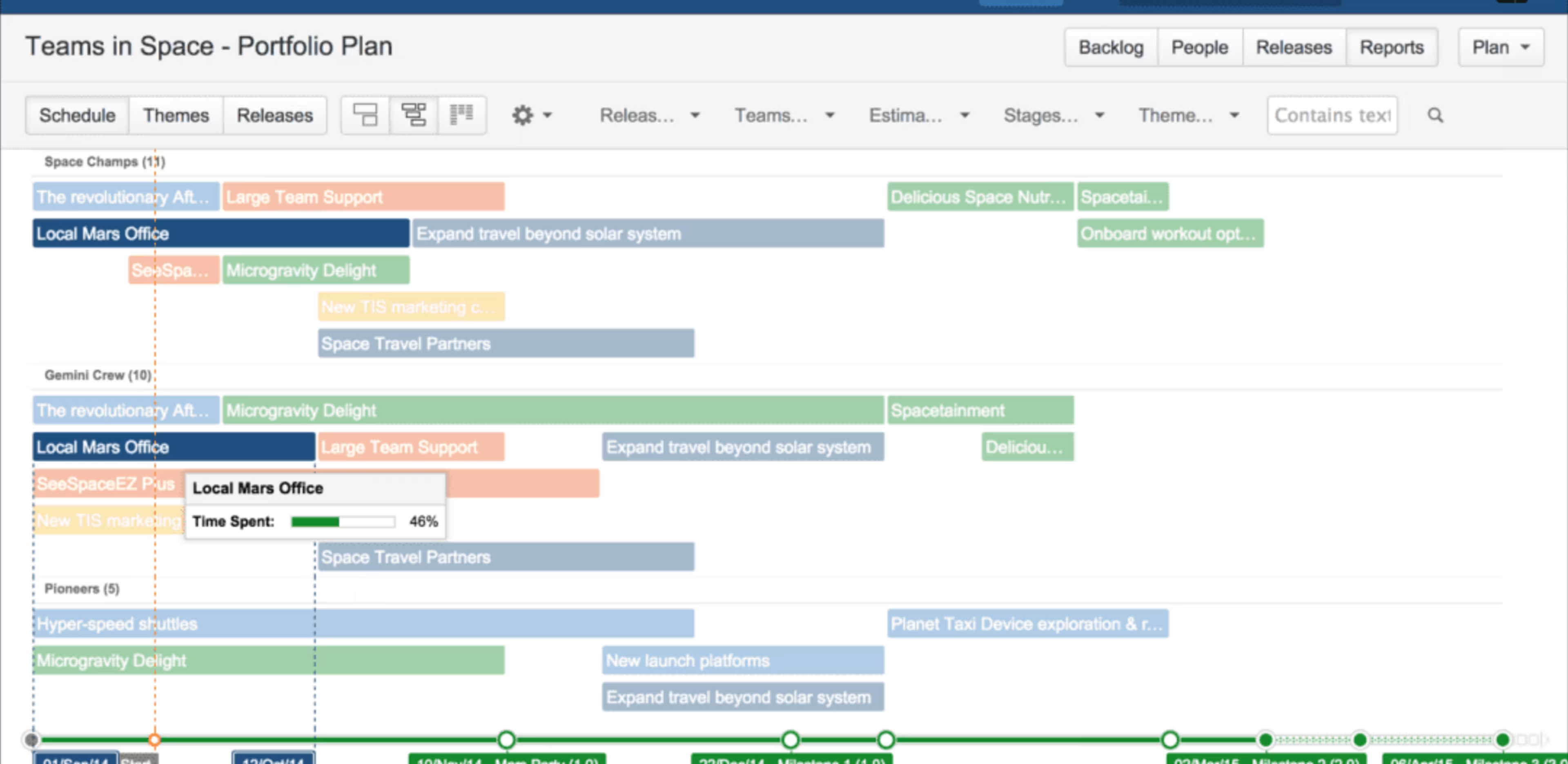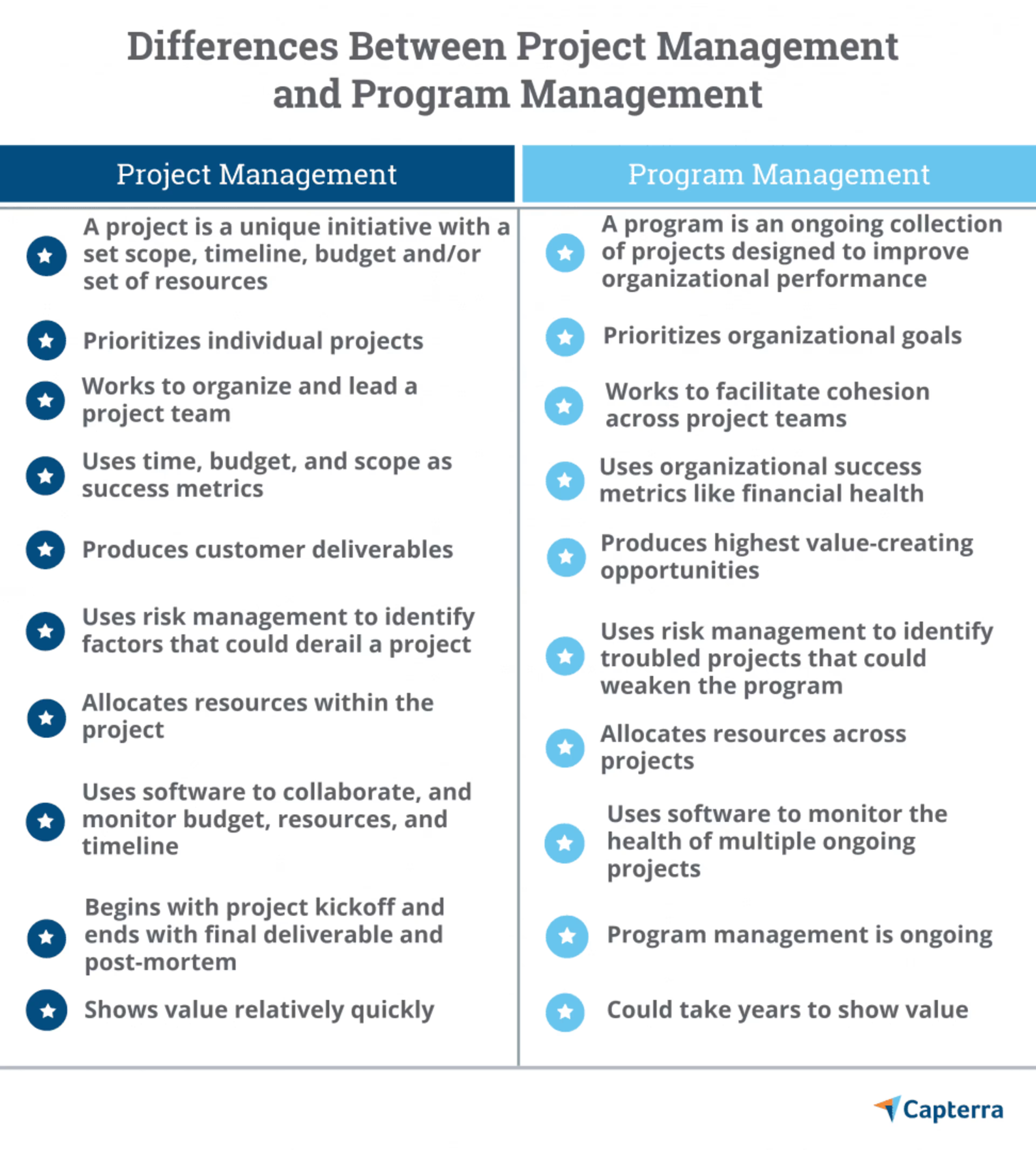A project management mindset might be holding your organization back. Follow these program management best practices to catch up.

Project management techniques and soft skills can get your small business off the ground and through the first few lean years. Organizing work, leading teams, properly budgeting and scheduling, and communicating between teams are all vital activities for a successful business.
But if all goes well, your business will eventually grow to a point at which just managing projects isn't enough. If you want to continue growing in a sustainable way, you'll need to gather those projects into programs and manage them holistically.
Taking a large-scale approach is also a good way of future-proofing your business and your career. Gartner estimates that by the year 2030, 80% of today's project management tasks will be eliminated by artificial intelligence and project management software.
By shifting your organizational goals toward program management now, you can get ahead of that trend. Here are three warning signs that it's time to turn your organization's project management into program management.
Need a refresher on the differences between project management and program management? Click here for a chart of major differences.
3 signs you should switch to program management
1. Your projects aren't building off one another
The problem
When a project ends, it's like a tree falling in the forest with no one around to hear it. Lessons learned aren't shared with other teams, surplus resources aren't strategically reallocated, and follow-up projects aren't planned.
Program management best practices that can help:
Your first step toward a program management mindset should be to establish a project management office (PMO) to improve cross-team communication and align projects to larger organizational goals.
PM Solutions Research found that organizations with a PMO see a 43% improvement in alignment of projects with their overall objectives.
If you don't have the resources to establish a dedicated PMO right now, try starting a channel on your collaboration tool for project managers to share resources and coordinate projects. You can think of it as a virtual PMO.
2. Project resources aren't shared
The problem
Project A is short-staffed and in danger of missing deadline, while Project B is over budget and over-staffed because of poor planning and lack of communication.
Program management best practices that can help:
You still need individual project managers to lead each project, but having a program management approach in place—overseeing staffing and resource management across all of your organization's projects—prevents situations like the one above. For example, your PMO could pull two coders off of Project B and reassign them to Project A, helping get both projects back on track.
Your PMO can also identify driver projects that are critical to your company's overall success, and receiver projects that are not as critical and are largely benefiting from the success of driver projects. In the example above, if Project A is a receiver project, your PMO might choose to phase it out altogether and reallocate its staff. On the other hand, if Project B is a driver project, your PMO might overlook the fact that it's over budget and strategically expand its scope.
Project management software with portfolio management capabilities can also help by allowing your PMO to see how multiple projects are doing at a glance.

Managing a portfolio of projects in Atlassian Jira (Source)
3. Individual project managers aren't collaborating or supporting one another
The problem
You have strong project managers who run their individual projects successfully, but you're not meeting organizational goals because the projects aren't aligned and teams aren't sharing information with each other.
Program management best practices that can help:
Your program manager, or PMO leader, should act as a coach and coordinator for individual projects and project managers in the same way that a head football coach oversees the offensive, defensive, and special teams coordinators to lead a cohesive unit.
Project management software can help your managers see the bigger picture, but getting project managers who are used to working on their own to work together requires organizational change.
Drive home the point that while individual projects are important, overall organizational goals are more important. When measuring performance, make sure to track KPIs that measure how their teams are contributing to overall organization success rather than just delivering their own projects on time.
Project management and program management best practices

Are you ready to turn your project management into program management?
If you have noticed any of the problems outlined above at your organization, it's time to take more of a program management approach. Establish a PMO, use project management software with portfolio management capabilities, and encourage your individual project managers to work together.
Ready for more project management tips and news? Bookmark our project management blog.